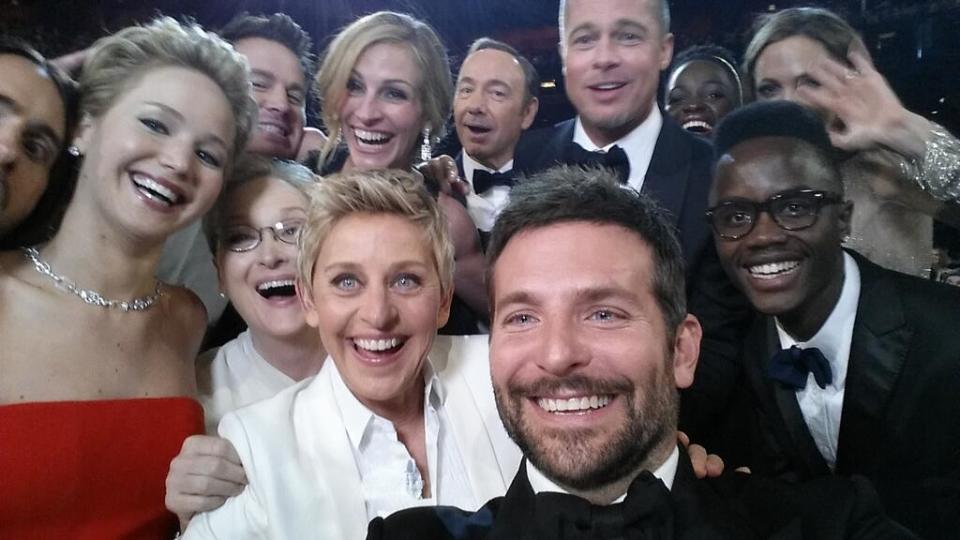 Business 2 Community
Business 2 CommunityProduct Placement: Increasing Brand Perception When People Aren’t Looking
The 86th Academy Awards was quite the record-breaking event. Besides the staggering 43 million people who tuned in, Ellen DeGeneres has now obtained the prize for initiating the most-retweeted item ever during the show, surpassing Barack Obama’s “four more years” photo. What was the viral post? No surprises – it was a star-studded photo, with just one intruder: a phone.

Specifically, it was a Samsung phone. Samsung arranged to have their product, the Galaxy Note 3, subtly placed into the normal happenings of the event. Between the 43 million viewers who saw the selfie-taking on TV and the over 3 million people who retweeted the photo on Twitter, Samsung’s little white phone got almost half as many views as the number of Americans who tuned into the most recent Super Bowl, a record-breaking event in itself. Says an expert from branding company Landor Associates, “Ellen’s selfie is going to be more impactful than their commercials.”
Product Placement and Its Roots
So why is product placement as a method of increasing brand perception so effective?
We can find some of its roots in the science of social psychology.
The Elaboration Likelihood Model posits that there are two general methods of inducing people to think a certain way on a topic. Psychologists call them the central and the peripheral route. The central route requires more effort on the individual’s part – you have to evaluate the arguments being made, and even prior to that, you have to have the motivation to analyze the arguments. In contrast, people taking the peripheral route rely more on shallow characteristics, favoring attributes like the perceived expertise of the speaker or even the speaker’s attractiveness.
In one experiment, researchers asked students to listen to either strong or weak arguments on whether seniors should be required to take a comprehensive final exam to graduate. Some were told that the speaker was a prestigious professor at Princeton, others, a high school student. The catch? Researchers told part of the group that their school was seriously considering implementing this exam, and others that the school was in the planning stages and would not begin the program for ten years. Unsurprisingly, the opinions of the latter group changed far less than the others did when they heard strong arguments versus weak arguments because they were much less motivated to pay close attention to the arguments in the first place. In addition, they were significantly more likely to agree when the speaker was ostensibly a Princeton professor.
Implications on Increasing Brand Perception
It’s a scientific truth that humans don’t like to think more than they have to. When shown advertisements on TV, people reach for the remote. Advertisements on the Internet? AdBlock. Advertisements on billboards on the side of the road? Advertisers say that you can expect people to read about six words on a billboard max.
Tactics for increasing brand perception have long been focused on peripheral methods: sex appeal, celebrity endorsements, customer testimony. But these tricks only work if people make the effort to care in the first place, which is what your advertisement originally set out to do – make people care. What a catch-22!
We need to make a shift to catch consumers in a venue where they care. We need to make advertising speak to the public on a personal level. It’s all nice and well to mass-broadcast a commercial telling people why your product is great, but it’s better to mass-address them individually.
What are your suggestions for increasing brand perception through a more central route?
This article was syndicated from Business 2 Community: Product Placement: Increasing Brand Perception When People Aren’t Looking
More Business articles from Business 2 Community:

